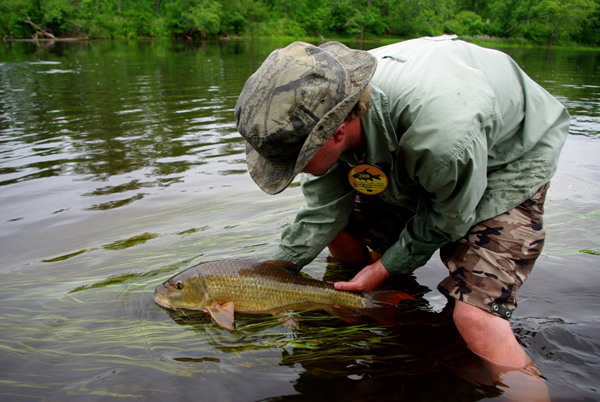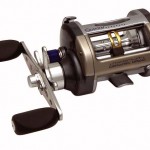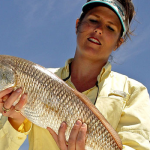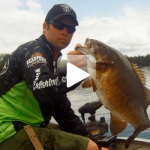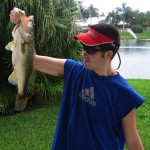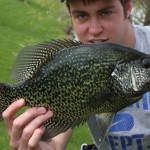By: Jeremy Dunfee – Date Posted: May 11, 2011
I have always been a fan of catching all fish, including those most people don’t understand. When I found internet forums it opened up an even wider world for me. One family of fish I was aware of, but knew little about before the internet forum era, was the redhorse family. They quickly became a holy grail to me, something I wanted to experience.
Before I even knew it I was on a babbling brook upstream of the mouth, face to face with a school of shorthead redhorse, a species I had never gotten to pursue. It was getting dark, so we decided to just return the next day. To our surprise, a slow steady overnight rain had raised the creek a few inches, and brought a ton of hungry fish in with it. What ensued was by far the greatest day of redhorse fishing I’ve ever experienced. Over 20 shortheads apiece measuring between 15 and 23 inches, along with a few goldens and northern hogsuckers sprinkled in. . . . . . If we had only known how lucky we were.
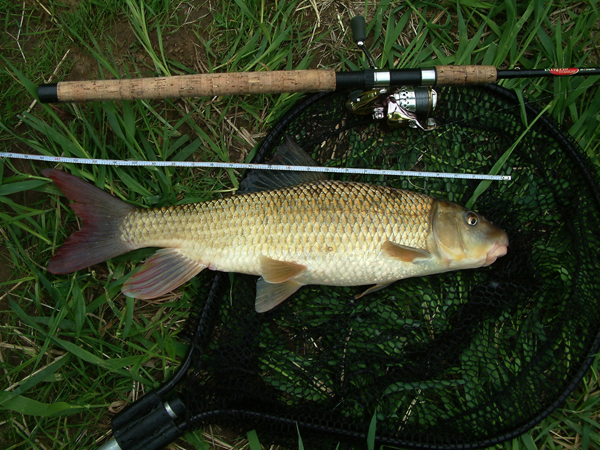
Like all other species of gamefish, redhorse exhibit periods of heavy feeding and even some aggressive behavior. This ultimately results in some easy fishing if you’re timely (or lucky) enough to be at the local river at the peak of their action.
Sucker behavior is affected by local and seasonal weather, barometric pressure, lunar activity which I am fully convinced, as well as those familiar “x” factors. All play a role in a redhorse’s eagerness to take your offering. The more of these puzzle pieces that come together to make a pretty picture, the less chance you’ll leave with dry net and a tear in your eye. Unfortunately, as any avid sucker fisherman knows, these windows can be short and sweet, and few and far between. That reality, mixed with their timid nature, creates a lot of less than ideal days, and even the Spring Sucker Run is not impervious to this. If you want to target them year round with success it’s assured that most of your time will be spent thinking, plotting, waiting, creeping, and many times trying not to make the tiniest mistake that can turn a great opportunity into something that keeps you up at night.
Trust me when I say an unsuccessful day of redhorse fishing might be the most frustrating thing in fishing. But there is nothing like the feeling of being so in touch with the nature, and the rewards of coming out on top and hulling in one of God’s most beautiful creatures after it burns line off your reel and leaps, glistening gold and blood red.
To me it’s well worth it. These are a few tips that will hopefully make it easier to put fish in the net on those hard days.
LOCATING FISH
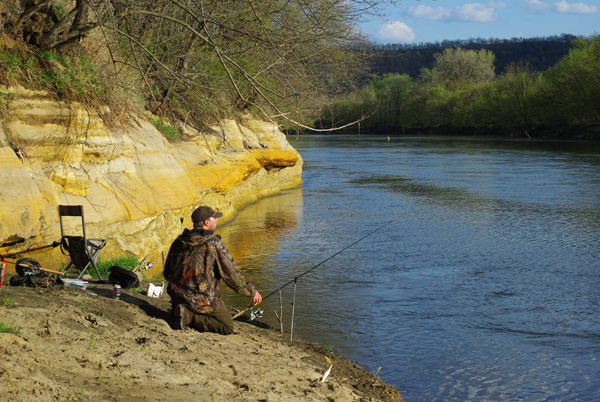
Do your research, especially before checking out waters you don’t know. DNR, Fish and Boat, college and independent studies, local message boards, and even word of mouth are good places to begin. Research the species you will be targeting and learn their habits and preferences. When you are on the water scouting, be alert and perceptive. Don’t just look for the species you’re targeting. Noticing fauna with similar habitat means you are on the right track.
Mussels, river chubs, and northern hogsuckers are good indicators in any area that there are probably ‘horsies around. Learning about these predators, meals, and neighbors can pay off. Look for feeding trails. If you find fish that seem to be dormant, case the area before casting. Often times there are feeding fish around the dormant ones, but it’s a better bet to find faster water nearby.
BE INVISIBLE
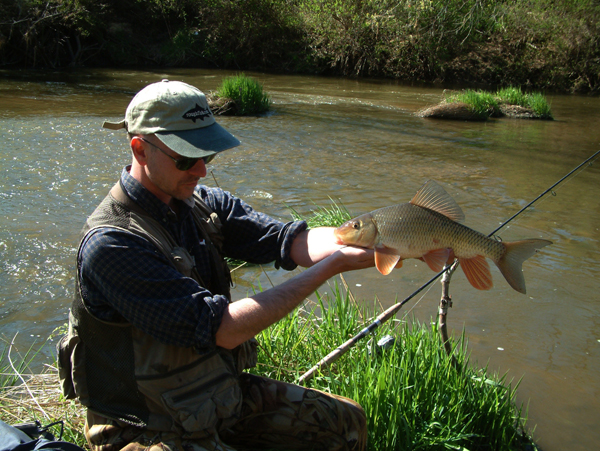
Mind your environment. Suckers have heightened senses, and it’s that mixed with schooling behavior and a general suspicion of the unkind world around them that gets them to adulthood. That should be kept in mind at all times. Even when fishing in a situation where schooling isn’t a big factor they often occupy the same habitat, so it can’t hurt to be too careful. There is nothing worse than creeping around on a hot, fishless summer day, finally spotting a school of willing suckers, then having a bad cast or a startled flock of waterfowl sending them off to a riffle far, far away.
Making your presence seem unknown, or at least distant or unthreatening, is key. Be as low-key as your comfort level allows. Stay low whenever possible. The way a fishes eyes, especially a “forage fish” are positioned and function make you look a lot higher than you actually are. In other words, you stick out like a sore thumb if visibility is high. Wear camoflauge. This isn’t absolutely necessary, and I end up fishing on laundry day a lot, but you would be shocked the difference it actually makes, especially on those hard days. Try not to make a lot of noise or take clumsy steps. You don’t exactly have to be John Rambo, but it couldn’t hurt.
USE FINESSE
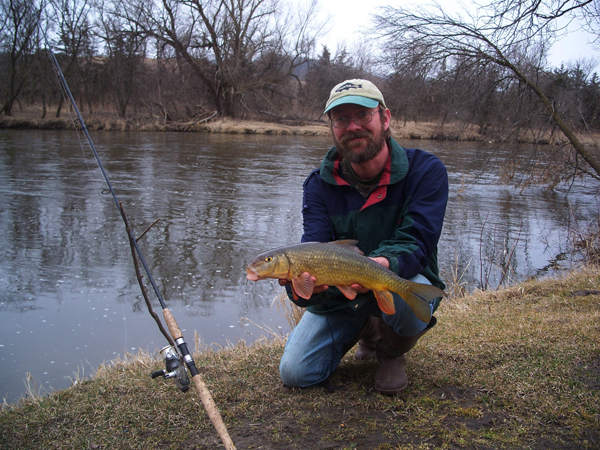
Use the lightest tackle possible for what you’re trying to do. Downsize everything, including live bait. Garden worms or craw meat instead of nightcrawler chunks might be a better choice, for example. Use as little weight as fits your style of fishing you’re your sinker is too large the fish will be more inclined to drop the bait fast. There is also a risk that it may see it and be scared away. A slow action rod may convince a fish to hold on a little longer, as will an arch of semi-slack line. In my opinion drifting or rolling bait is my favorite technique for rough days, casting upstream and drifting near the bottom, along the edges of schools or feeding areas is probably the best thing you could do, and often takes little or no weight. Anchoring bait to the bottom works just fine, as long as you don’t KERRPLUNK it on top of their heads. Either way use the drift to your advantage, casting directly into a school of suckers is never a good idea. Experimenting with your leader length can help a lot. My general rule is the tougher the fishing gets, the longer my leader gets. Probably most important, watch your line carefully, on less than ideal days suckers can bite very lightly.
Every extra measure of carefulness should make you more confident, and bring you closer to success. It may even help improve your finesse fishing tactics in general, and make you more creative when on the water. Those 2 things have single handedly turned around more trips for me than anything, and I owe that mostly to hard-to-convince suckers. Fly fishing would be another great option. I’m actually convinced that if evolved to deal with them more specifically, fly fishing would be the best possible way to catch suckers in most conditions. Plenty of people do it, but compared to other species it’s a drop in the bucket. I’m not a very good fly fisherman, so I’ll leave that up to someone else.
USE WATER CLARITY TO YOUR ADVANTAGE
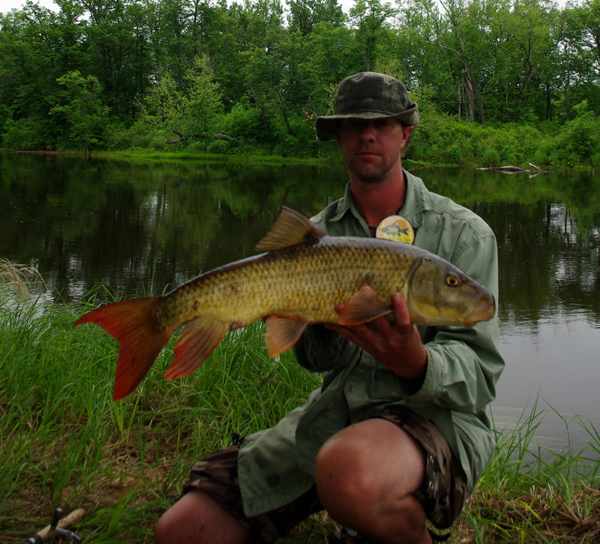
Low, clear and high, and murky water sometimes make redhorse species difficult to catch. For these reasons you need to use water clarity to your advantage in order to come out successful. For instance, stay away from flat and shallow water. The deeper or faster the water, the less light penetrates. This means you are harder to see on shore than if you were in other, sometimes even similar looking areas of the river. These are often some of the best areas for redhorse fishing anyway, whether it is a difficult day of fishing or not.
This seems to be especially true on small streams where habitat is limited. The mouths of murkier warmwater tributaries and any other sections of lower clarity may give you a tactical advantage in this case, as well. Just look for areas with a reasonable amount of current nearby, or flowing through them.
High water actually helps often times, but when dealing with really high water check out the lower sections of clear tributaries nearby. This includes their mouth with the river, and the line where there is a distinct mud line.
HAVE FUN
This article is simply intended to share techniques that maximize my success for catching redhorse when they aren’t cooperating. Obviously these tactics will not always be necessary, but in the right situations they might be.
If you fish in the right place at the right time you may have a great day while sitting on a chair and sipping a beer. I love those days just as much. The beautiful thing about all fishing is that it’s only as easy or as difficult as you make it to be. I promise you, study and learn about the kings of suckers and you will be happy with your decision. Lastly, when The ‘Horsin Gets Tough, remember these tips, and above all else have fun out there.
Special thanks to Jeremy Dunfee. For more information concerning redhorse fishing Jeremy can be contacted at J_fridge@yahoo.com / Also special thanks to Corey Geving and Roughfish.com for their contributed photos. Visit www.roughfish.com


